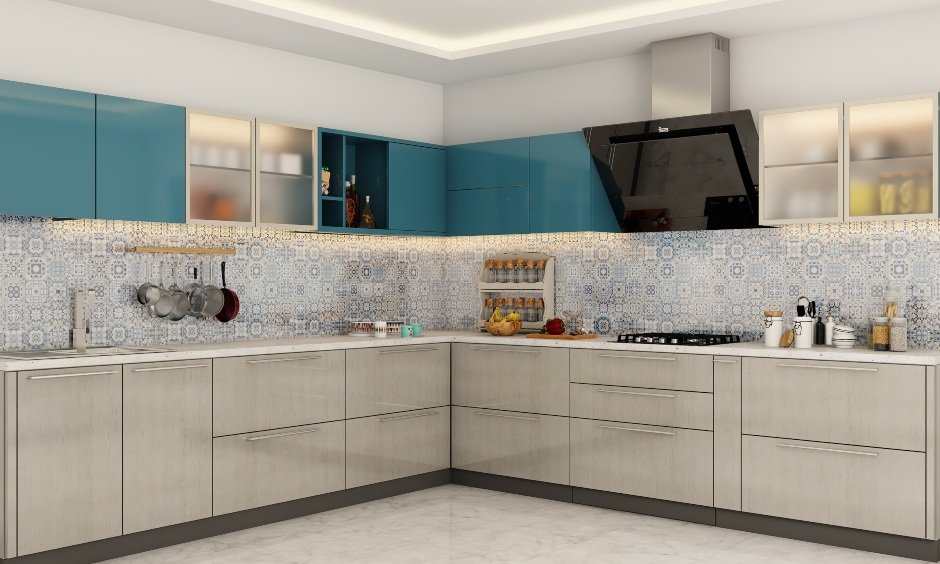Achieve prosperity by placing the kitchen sink as per Vastu in your dream home.
Have you ever walked into a room and just felt like something wasn’t quite right? That might be the energy of the space talking to you, and ancient practices like Vastu Shastra have been addressing these feelings for centuries. Even the most minor elements, like the kitchen sink, can make a big difference within this vital space. Let’s dive into the fascinating world of kitchen sink direction as per Vastu and discover how this ancient wisdom can bring harmony and prosperity into your home.
Understanding Sink Placement in Kitchen Vastu
Vastu Shastra is an ancient Indian science that emphasises the harmonious alignment of our living spaces with natural energies to promote health, prosperity, and well-being. This traditional architectural system guides homeowners in creating spaces that support positive energy flow.
The kitchen, as the heart of the home, is significant in Vastu Shastra. Proper placement of kitchen elements, including the sink, is crucial to maintaining a balanced and harmonious environment. Sink placement in kitchen Vastu is particularly vital, as water elements influence the overall energy flow. Following Vastu principles for sink placement ensures that the kitchen remains a positive and nurturing space.

Latest Modular Kitchen Designs
Role of Sink Position in Kitchen as per Vastu
In Vastu Shastra, the kitchen is considered a vital area that significantly impacts the health and prosperity of a household. Ideally located in the home’s south-east corner, known as the ‘Agni‘ (fire) corner, the kitchen’s design and layout should follow specific Vastu guidelines to optimise positive energy flow.
One crucial aspect is the sink position, as per Vastu. The kitchen sink, representing the water element, must be placed carefully to ensure balance and harmony. Incorrect placement can disrupt the kitchen’s energy and lead to conflicts or financial difficulties. Adhering to Vastu principles for sink placement helps maintain a harmonious environment where the fire and water elements coexist peacefully, enhancing the overall well-being of the household.

Importance of Sink Position in Kitchen as per Vastu
The kitchen sink represents the water element, which is essential for cleansing and purification. Water symbolises prosperity and the flow of energy. Therefore, the position of the kitchen sink, as per Vastu, should be chosen carefully to avoid negative impacts. Incorrect placement can lead to conflicts and financial losses. Proper sink placement in the kitchen Vastu ensures that the water element harmonises with other elements, promoting a positive and productive environment.

What is the Best Place for a Sink in Kitchen as per Vastu?
According to Vastu Shastra, the ideal direction for the kitchen sink is the northeast corner. This placement aligns the water element with the natural flow of energy. If the northeast is not feasible, the next best place for the sink is the north or east directions.
These orientations help maintain a balance between fire and water elements in the kitchen. Sink position in kitchen, as per Vastu, also recommends avoiding the southwest and northwest corners, as these can lead to energy imbalances and adverse outcomes.

Practical Tips for Implementing Vastu for Kitchen Sink
Implementing Vastu principles for your kitchen sink involves a few practical steps as follows:
- Determine the best place for the sink, as per Vastu, by using a compass to find the northeast corner.
- If structural constraints prevent ideal placement, consider Vastu remedies such as placing a mirror in the northeast to reflect positive energy.
- Maintain cleanliness and avoid clutter around the sink to enhance the beneficial effects of the correct sink position in the kitchen, as per Vastu.
- Balance aesthetics and Vastu principles by integrating modern design elements with traditional norms.

In conclusion, following the principles of kitchen sink direction, as per Vastu, is essential for creating a harmonious and prosperous home environment. The correct placement of the sink can significantly influence the overall energy flow in your kitchen, impacting the health and wealth of your household. By considering Vastu principles, homeowners can blend ancient wisdom with contemporary living to achieve a balanced and positive space. Thinking about where to begin? Our design experts will help you determine the right kitchen sink design and placement to ensure positive vibes flow into your living space. Reach out: Contact Us | Home Interior Design | DesignCafe
Also, check out our
- Vastu Tips For Your Kitchen to Enhance the Space
- Kitchen Direction As Per Vastu For Your Home
- Modular Kitchen Designs
FAQs on Kitchen Sink Vastu
1. Where should the kitchen sink be, according to Vastu?
According to Vastu, the kitchen sink should ideally be placed in the north-east direction. If this is not feasible, the east or north directions are also suitable. These placements ensure positive energy flow, promoting health and prosperity for the household.
2. Where should the sink and stove be placed?
According to Vastu, the stove should be in the south-east corner of the kitchen, symbolising the fire element. The sink, representing the water element, should be in the north-east direction. This arrangement maintains a balanced energy flow, ensuring harmony and health in the home.
3. Should I put a kitchen sink in the corner?
Putting a kitchen sink in the corner is generally acceptable if it aligns with Vastu principles, ideally in the north-east direction. However, ensure that the sink is easily accessible and does not disrupt the kitchen’s workflow, maintaining functionality and positive energy.
4. What is the minimum distance between the kitchen sink and stove?
According to Vastu, the kitchen sink and stove should be at least 2-3 feet apart. This separation ensures that the water and fire elements do not clash, promoting a harmonious energy flow and preventing conflicts or imbalances in the kitchen environment.
5. What is the most common kitchen sink size?
The most common kitchen sink size is around 22 inches by 30 inches. This size fits well in standard kitchen countertops, offering ample space for washing dishes and preparing food while also being practical for most kitchen layouts.



















